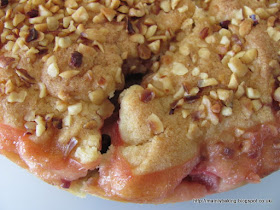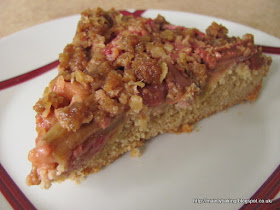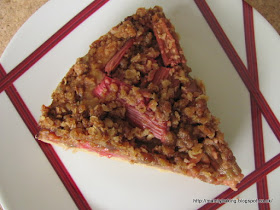for We Should Cocoa
The added ingredient for
this month's We Should Cocoa event, hosted by Green Gourmet Giraffe, is malt. The idea of
We Should Cocoa, which originated from Choclette at Tin and Thyme, is to pair chocolate, in some form, with the added ingredient or theme chosen by each month's host.
My first (and only!) idea was to use malted milk powder in a chocolate cake, so I bought an individual sachet of Horlicks; it was then that I found that most recipes used upwards of a quarter of a cup of malted milk powder - more than I had.
After a lot of searching, I found two versions of a Peyton and Byrne cake on two of the blogs I read regularly -
Tin and Thyme (a fitting coincidence) and
The More Than Occasional Baker - which only used a tablespoon of malted milk powder, so I used this as my starting point. The sachet of Horlicks I had looked as if it contained about 2 tablespoons, and I used 40g of malt extract in place of 40g of the dark muscovado sugar in the recipe, to increase the maltiness. In the absence of any milk chocolate in the storecupboard, I used white chocolate.
I followed the method in the recipe I found on The More Than Occasional Baker, as it was so unusual that I thought it must be nearest to the original. It might have been that my loaf tin was too short and deep, but I found the cake took 60 minutes to cook, rather than the 35-40 minutes suggested in the recipe (something Choclette at Tin and Thyme found too).
Ingredients
70g light muscovado sugar
70g dark muscovado sugar
40g malt extract
140g SR flour
1/2 teaspoon salt
32g (1 individual sachet) Horlicks malted milk powder
125g softened butter, in small pieces
1 large egg
1/2 teaspoon vanilla extract
50g plain chocolate, melted
110mls milk
75g white chocolate, chopped
Method
Preheat oven to 170C and line a 2lb loaf tin with baking parchment.
Combine the sugars, malt extract, flour, salt and malted milk powder in a large bowl.
Add the butter and beat with a hand-held mixer, on a slow speed, until evenly combined.
Add the egg and vanilla extract and beat until light and fluffy, then beat in the melted chocolate and milk until evenly combined.
Stir in the white chocolate pieces and transfer the batter to the baking tin.
Cook until a test probe comes out clean. The original recipe suggested 35-40 minutes, but my loaf took 60 minutes.
Cool in the tin for 15 minutes then transfer to a wire rack to finish cooling.
I really liked the flavour combination of malt and chocolate, but this particular recipe really didn't work out very well. Although the loaf seemed to rise well in the oven, it sank a lot while cooling and became quite dense. It also dried out a bit around the edges, due to the longer cooking time.
 Ingredients
Ingredients Spread 2/3 of the dough into the bottom of the prepared tin, working the dough up the edge of the tin to make a shallow wall.
Spread 2/3 of the dough into the bottom of the prepared tin, working the dough up the edge of the tin to make a shallow wall.








